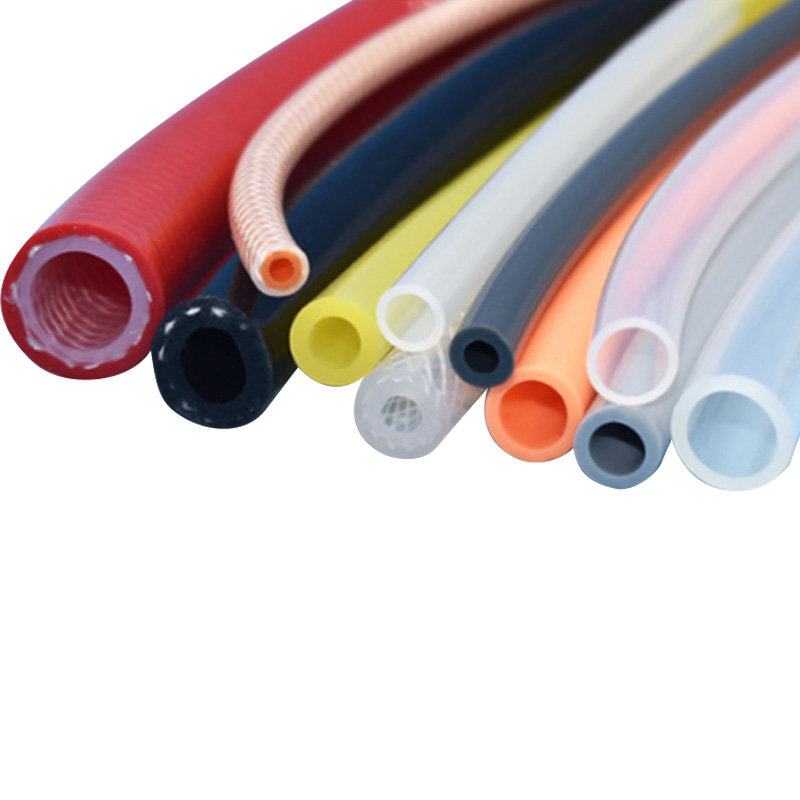What Are the Internal Parts Replacement Procedures for a Rubber Hose Production Line?
A rubber hose production line is a complex system that combines mechanical, electrical, and chemical processes to produce high-quality hoses used in various industries. The internal parts of the production line—such as extruders, braiding machines, vulcanizers, and cooling systems—require periodic inspection and replacement to maintain operational efficiency and product quality.

Preparation and Assessment Before Replacement
Before any internal component is replaced, proper preparation and assessment are crucial. The step is to conduct a technical evaluation of the equipment’s condition. This involves identifying worn or damaged components through visual inspection, performance monitoring, and vibration or temperature analysis. For example, in an extruder, the screw and barrel are critical wear parts. Excessive friction or uneven mixing patterns often indicate that these parts require replacement.
The next step is planning the replacement schedule. Since production lines typically operate continuously, maintenance should be arranged during scheduled downtimes or low-production periods. This reduces production loss and allows technicians to perform the replacement carefully. Maintenance planning includes listing required parts, tools, and personnel assignments.
In addition, safety measures must be implemented before beginning any work. The entire line should be powered down, and all energy sources must be locked out and tagged to prevent accidental startup. Protective equipment such as gloves, goggles, and anti-static footwear should be worn. Safety signage and barriers are also necessary to restrict unauthorized access to the maintenance area.
Finally, documentation and verification of the parts to be replaced are important. Using manufacturer manuals or digital maintenance systems, technicians verify the part specifications and cross-check compatibility with the replacement items. Incorrect or incompatible parts can result in equipment malfunction or product defects, so accuracy at this stage is vital.
Replacement and Installation of Internal Components
Once preparation is complete, the next phase involves the systematic removal and installation of internal parts. The process typically begins with disassembly. For instance, when replacing the screw of an extruder, the heater bands and barrel must be carefully removed . Proper labeling of wires, pipes, and fasteners helps ensure correct reassembly later. Using appropriate lifting tools or mechanical aids prevents damage to precision components.
During component replacement, cleanliness and precision are critical. All contact surfaces must be cleaned of residue, rubber debris, or corrosion. Technicians should inspect sealing elements such as O-rings or gaskets and replace them if necessary. When installing new components, proper alignment and torque settings are applied according to manufacturer guidelines. For example, when fitting a new roller in a braiding or cooling system, alignment is essential to maintain product uniformity and prevent belt slippage.
Furthermore, lubrication and calibration must be performed after installation. Bearings, screws, and rotating shafts require suitable lubricants to minimize friction and wear. Calibration ensures that sensors, temperature controllers, and pressure gauges function correctly after replacement. Failure to calibrate these elements may deviations in product thickness or curing quality during subsequent production.
All replaced components should then be reconnected to electrical, hydraulic, or pneumatic systems. Connections are tested for leaks, and control signals are verified to confirm that communication between subsystems remains intact.
Post-Replacement Inspection and Optimization
After reassembly, the line undergoes a comprehensive inspection and testing phase. This begins with a dry run, where the system is powered on without feeding raw materials. The objective is to detect abnormal sounds, vibration, or temperature rises that may suggest misalignment or improper installation. Technicians use diagnostic tools such as infrared thermometers and vibration meters to assess equipment behavior.
Following successful dry testing, a trial production run is carried out using a small batch of material. This allows evaluation of extrusion pressure, hose diameter consistency, and surface quality. If irregularities appear, fine-tuning of component positioning or process parameters is conducted. For example, adjusting the extruder temperature zones or braiding tension can help restore normal product characteristics.
Documentation and continuous improvement close the replacement cycle. Maintenance personnel record the parts replaced, serial numbers, installation dates, and performance observations. These records form a historical maintenance log, which aids in predicting future replacements and optimizing spare parts inventory. By analyzing trends from previous maintenance cycles, factories can improve their preventive maintenance strategies and reduce unexpected downtime.
Feedback from production staff is valuable for assessing the success of the replacement. Operators can report changes in machine performance, ease of operation, or product consistency. Combining technical data with operator input supports continuous improvement and long-term reliability of the production line.






 English
English 中文简体
中文简体 русский
русский



